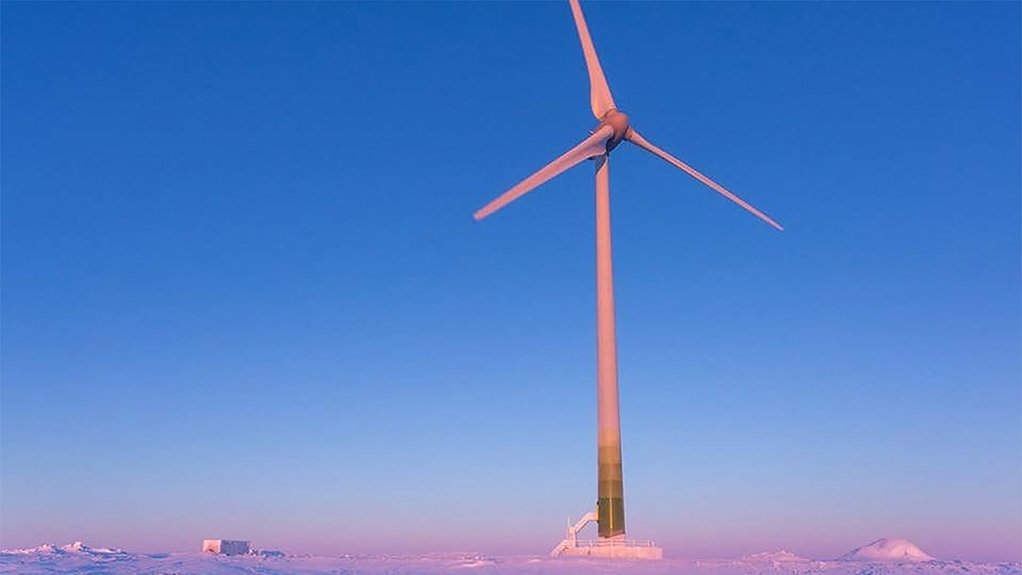JOHANNESURG (miningweekly.com) – Diversified mining and marketing company Glencore views the ferrochrome market as being particularly strong currently.
“We’ve seen very healthy ferrochrome prices and good cash generation in that business,” Glencore CEO Gary Nagle said.
In response to Mining Weekly during a media conference following the company’s presentation of record half-year results, Nagle highlighted ferrochrome’s good fortune as being driven by the very strong global production of stainless steel, in which it is a key ingredient.
Fiscal stimulus has boosted demand for white goods and the like, and stainless steel and its ferrochrome twin have provided the necessary innards to meet that demand.
Nagle was unequivocal about ferrochrome forming part of the green revolution that is currently sweeping the world with ever-growing vigour: “Without a doubt it is,” was his comment on ferrochrome’s contribution.
“Obviously our South African ferrochrome business is slightly challenged in the sense that our Scope 2 emissions are quite high given that our electricity supply comes from Eskom.
“But Eskom, as you know, is working on reducing its reliance on coal and focusing on renewables, which would naturally bring lower Scope 2 emissions.
“Without ferrochrome, you’re not going to have stainless steel, and without stainless steel, you’re going to have to produce more steel more often, because stainless has greater longevity.
“In the longer term, stainless steel is better for the environment than using non-stainless type products that have shorter lives and need to be replaced more regularly.
“Ferrochrome doesn’t get the headlines like the coppers and the nickels and the cobalts of the world do, but certainly in being essential for stainless steel, ferrochrome is a critical part of the green mix,” said Nagle.
Meanwhile, on the operational front, firm steps are being taken to generate renewable energy and cogenerated energy for the production of ferrochrome.
This was made clear by Glencore ferroalloys head Japie Fullard, who said three distinct areas were under scrutiny.
“First of all, steps are being taken to generate electricity from cogeneration, which involves taking the plants’ offgas and turning that into electricity. We’ve got a couple of projects currently on the go doing that and we’re also investigating taking that further.
“Secondly, we’re also looking at on-site renewable energy in terms of solar and wind.
“And thirdly, we’re looking at off-site generation – we’re in a big feasibility phase looking at virtual power plants,” added Fullard.
At the main presentation, at which Glencore announced the setting of a more aggressive short-term target of a 15% reduction in total Scope 1, 2 and 3 emissions by 2026, an analyst questioned Glencore on what it was doing to reduce the heavy contribution to Scope 1 and 2 emissions of its ferroalloys business in South Africa, owing to Eskom’s carbon-heavy coal-fired electricity supply.
Nagle’s response was that “it’s certainly front and centre for us”, and that medium- to longer-term decarbonisation strategies were in the process of being implemented in South Africa.
In the half-year, attributable ferrochrome production of 773 000 t was 307 000 t (66%) higher than in the corresponding period of 2020, reflecting that mining and smelting operations were suspended for much of the second quarter of last year owing to South Africa’s national Covid lockdown.
Vanadium pentoxide production of 11-million pounds was 2.7-million pounds (33%) higher, also mainly reflecting the national lockdown in the base period.
SOUTH AFRICAN COAL EXPORTATION TO CHINA NOW THE NORM
Glencore’s production of 48.7-million tonnes of coal in the six months to June 30 was 9.4-million tonnes (16%) lower than in the first half of last year, reflecting mainly continued market-driven supply reductions initiated in the second half of last year.
On the export of South African coal to China seemingly being the norm now rather than the exception, Nagle replied in the affirmative.
China stopped importing South African coal about seven or eight years ago. This was because of some slight concern about trace elements.
But with the issues around Australia, China has returned to being a regular importer of South African coal.
“It’s hard to see the Australian/Chinese situation resolving any time soon and with that said, subject to freight rates and qualities, there’s no reason to believe that South African coal can’t continue to supply the import Chinese market,” said Nagle.
In early 2019, Glencore capped its coal capacity at 150-million tonnes of coal a year, in the interests of transitioning to a low carbon global economy. It was then that it undertook not to build any new coal mines and to deplete its existing mines.
On the steps envisaged to rehabilitate coal mines as they deplete, Glencore head of coal in South Africa Murray Houston said the company was governed by mine works plans in terms of mine life considerations with the Department of Mineral Resources and Energy, and also through environmental agencies.
Houston explained that the opencast mines are run on a rollover basis where the rehabilitation follows a couple of cuts behind.
“One does end up with final voids, which have to be provided for and closed up at the end of the day, and the mines have ultimate closure plans in terms of recycled land form as well as putting back the top soil and planting seed.
“Obviously, they wouldn’t be exactly the same as what they were before but largely they would be returned to a natural state,” said Houston.
Glencore this week announced additional shareholder returns, comprising a $0.5-billion special cash distribution for payment in September and a $650-million share buyback to be completed by the release of full-year results next year. This overall top-up lifts planned 2021 shareholder returns of the London- and Johannesburg-listed company to $2.8-billion.


Recent Comments